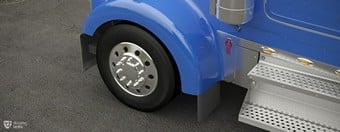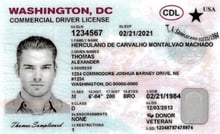Perfect for first-time and renewal CDL/CLP applicants, and those adding endorsements. Planning to drive commercial motor vehicles (CMVs) equipped with air brakes? Our practice materials provide everything you need to pass the written knowledge test. Failing to pass the test will result in your CDL including the restriction “L,” which will prohibit you from driving CMVs with air brakes. In District of Columbia, where the terrain is mostly flat and urban, air brakes are essential. Surrounding areas in Maryland and Virginia feature rolling hills and inclines that further accentuate this need. Heavy traffic, frequent construction, and complex interchanges make air brake proficiency essential for safety and efficiency on these routes. Virtually all semi-trucks and tractor-trailers are equipped with air brakes, so preparing for this test is a very wise career choice.
There are multiple industries in District of Columbia that rely on drivers with this certification. In public transit, the Washington Metropolitan Area Transit Authority (WMATA) operates buses requiring air brake-qualified drivers. Charter bus services such as DC Trails and Gray Line DC often use vehicles with air brakes. Most school buses in the area are equipped with air brakes, necessitating this qualification for drivers. Additionally, companies like FedEx, UPS, and Amazon require air brake-certified drivers for deliveries. As such, removing the “L” restriction unlocks a wide range of career opportunities, so let’s take a look at the requirements.
The two-part (skills test and knowledge test) official DMV test covers the parts of an air brake system, their effective use, and air-brake inspection procedures. The skills test requires you to physically inspect an air brake system (checking air pressure, testing for leaks, etc.), identify its components, and operate a vehicle equipped with air brakes. The knowledge test is in a multiple-choice format (a score of 80% or higher is passing) with questions on the concepts you’ve studied in the state’s CDL manual.
Our District of Columbia CDL Air Brakes Practice Tests mimic the content and format of the official DMV knowledge test. Our practice test questions and answers provide, in real time, responses for any wrong answers so you can learn right away instead of waiting for a bombardment of corrections at the end. Once you feel prepared, simply schedule the knowledge test at the DMV, pay any fees, and take the test.














